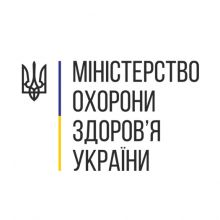New safety features for medicines sold in the EU
11.02.2019

As of 9 February 2019, most prescription medicines and some over-the-counter medicines for human use supplied in the European Union are required to have a unique identifier (a two-dimension barcode) and an anti-tampering device on their outer packaging. The anti-tampering device is a safety feature that shows whether the packaging has been opened or altered since it left the manufacturer, thereby ensuring that the content of the packaging is authentic.
These mandatory safety features are a key measure of the Falsified Medicines Directive which is part of the EU’s strategy to strengthen the security of the supply chain of medicines. The safety features are implemented through a delegated regulation that comes into application on 9 February 2019. It will apply in all EU/EEA Member States, except for Greece and Italy, who have until 2025 to update their already existing tracking systems.
The safety features will help protect European citizens against the threat of falsified medicines, which may contain ingredients, including active ingredients, which are of low quality or in the wrong dosage and could potentially put patients' health at risk. The unique identifier and the anti-tampering device on the packaging of the medicines will guarantee medicine authenticity for the benefit of patients, and will strengthen the security of the medicine supply chain, from manufacturers to distributors to pharmacies and hospitals.
Manufacturers will upload the information contained in the unique identifier for each individual medicine to a central EU repository. The repository is part of an end-to-end medicines verification system introduced by the regulation. Depending on the source of the medicine, wholesalers will also need to scan medicines at different points in the supply chain to verify their authenticity. Pharmacies and hospitals will then scan each medicine at the end of the supply chain to verify their authenticity and check them out from the repository before dispensing them to patients. Although the safety features are now a legal requirement, medicines that were released for sale or distribution without the safety features before 9 February can still be dispensed.
Also, from today, a new reporting form is available on EMA’s website to be used by pharmaceutical companies when notifying EMA of any suspected falsification of their centrally authorised medicines. The new form is specifically for notifications related to suspected and confirmed falsified medicines and suspicious offers, and is an important step in streamlining processes for reporting and investigating falsifications of centrally authorised medicines.
More on falsified medicines
Falsified medicines are fake medicines that are passed off as real, authorised medicines. In June 2011, the EU strengthened the protection of patients and consumers by adopting a new Directive on falsified medicines for human use. The Directive introduced new harmonised, pan-European measures, structured around four pillars:
- tougher rules on import of active substances;
- strengthened supply chain and requirements for wholesale distributors;
- a common, EU-wide logo to identify legal online pharmacies;
- obligatory safety features (i.e. the unique identifier and an anti-tampering device on the outer packaging of medicines that become mandatory today).
Source: www.ema.europa.eu

